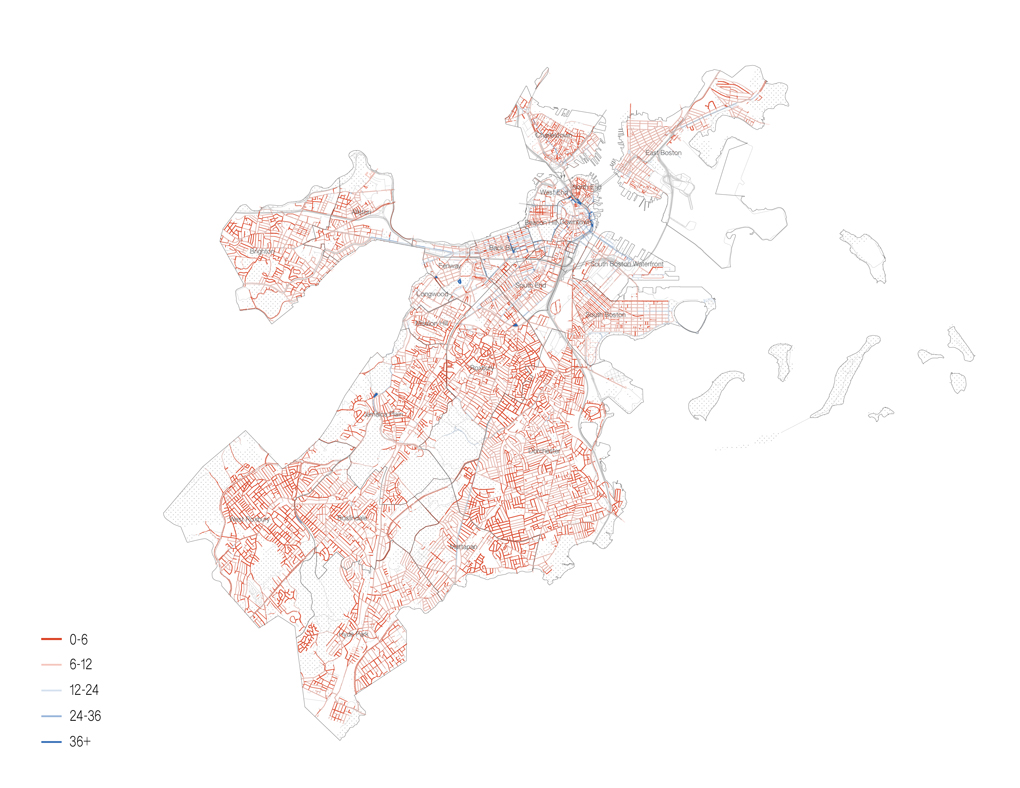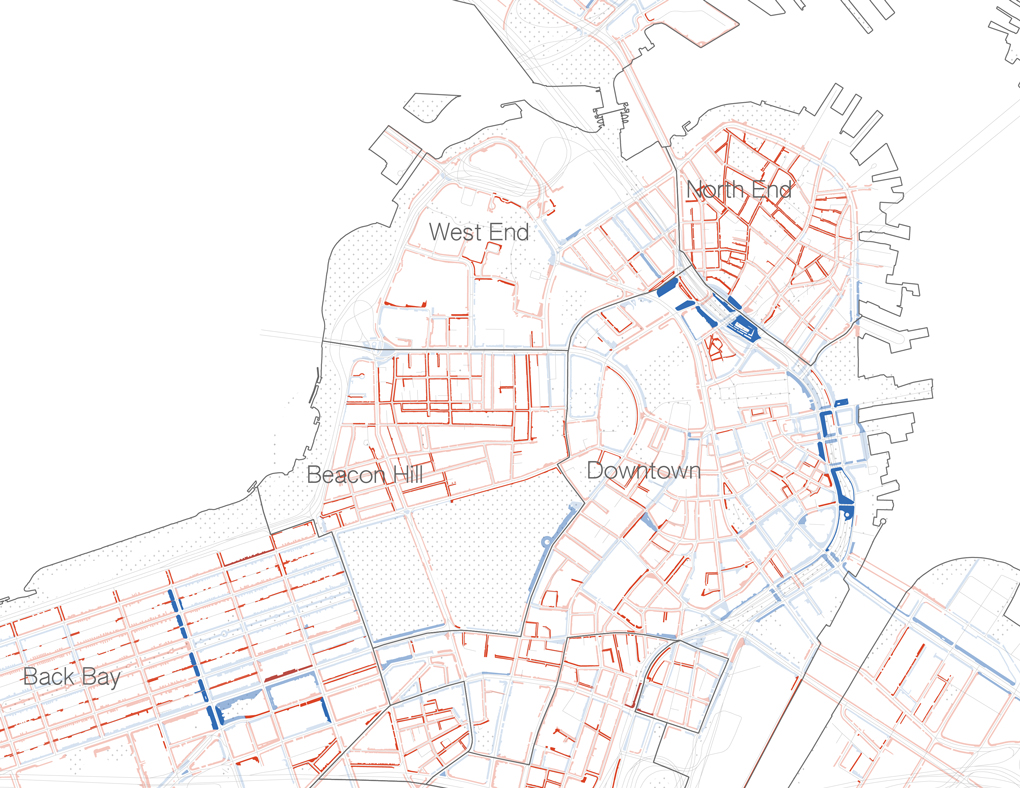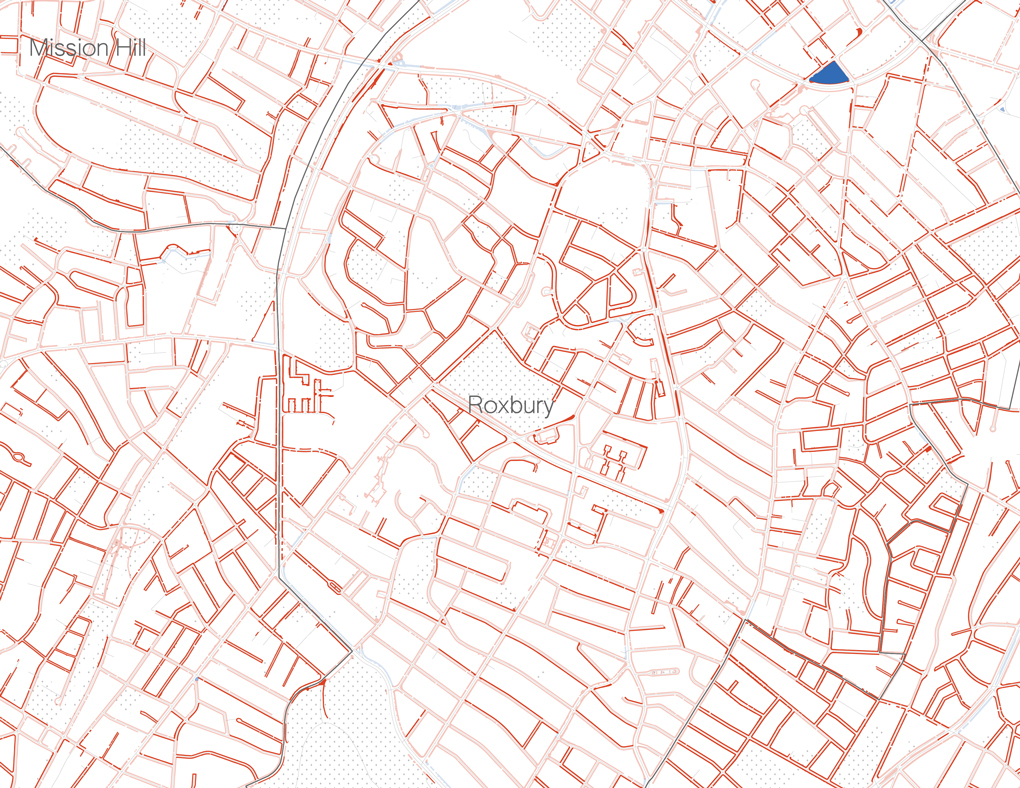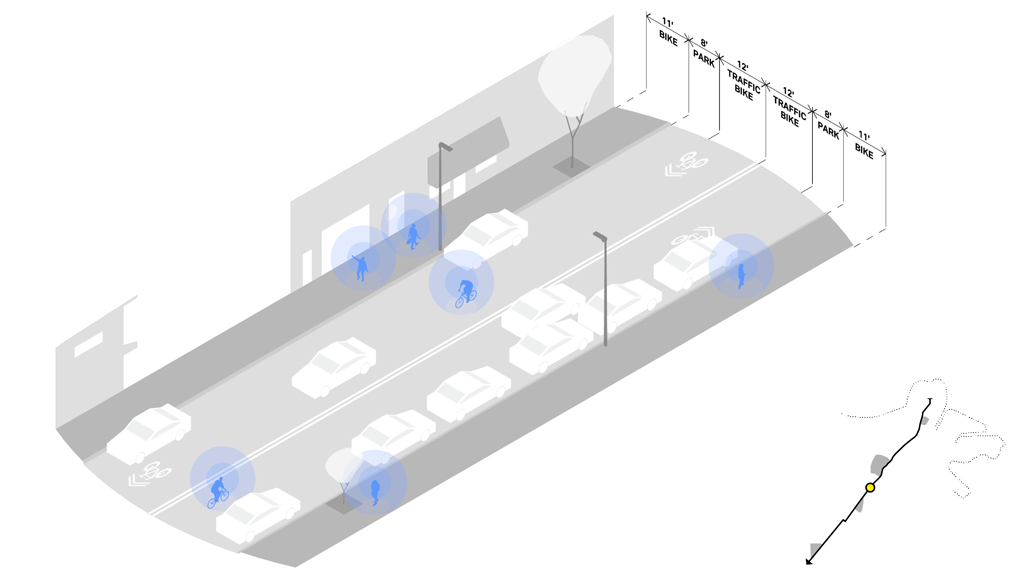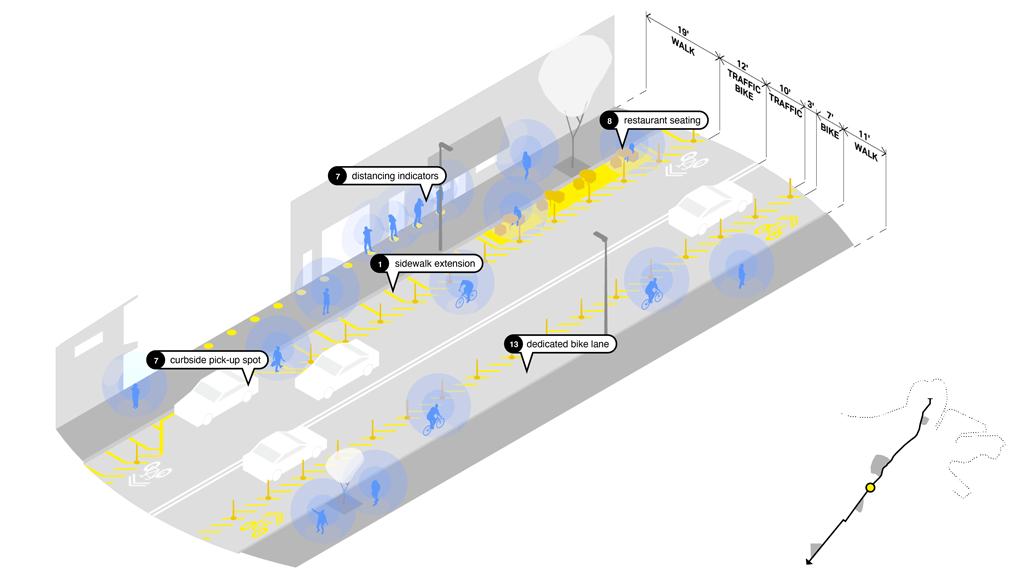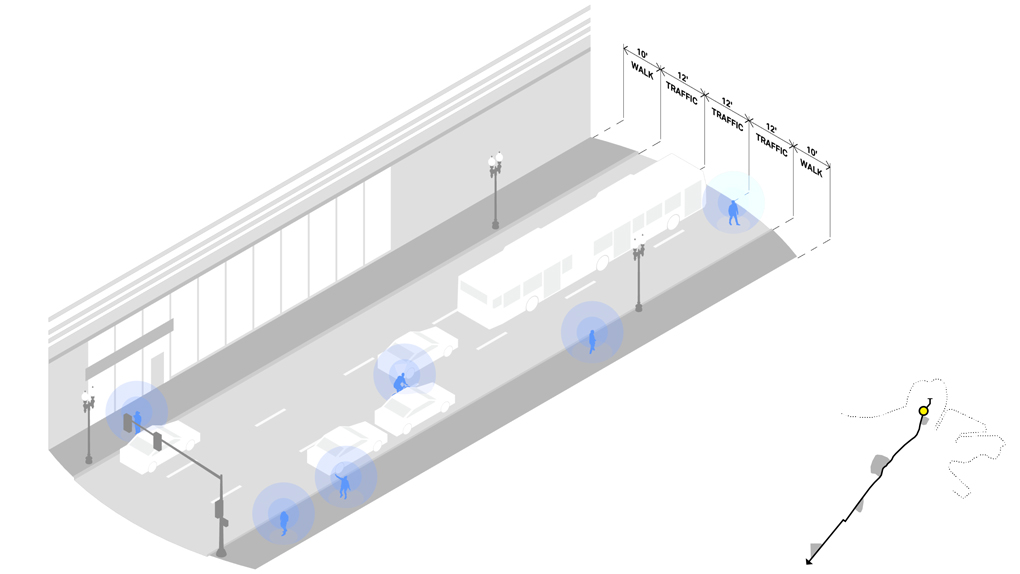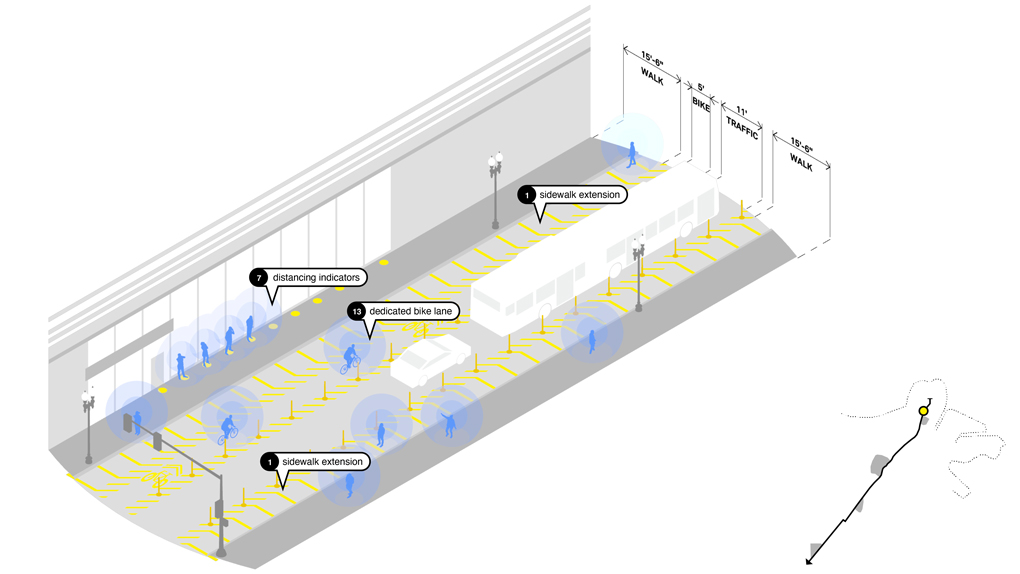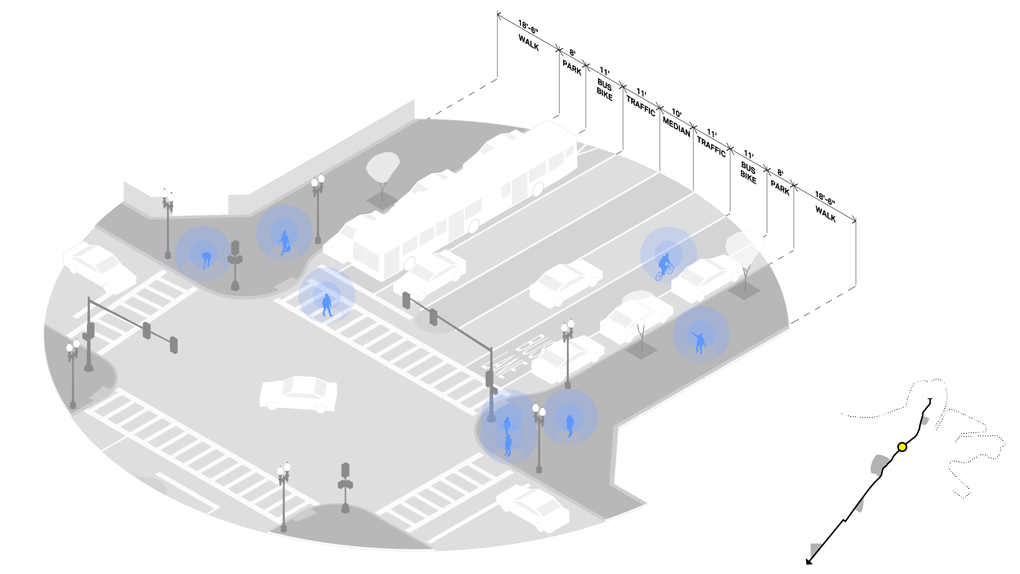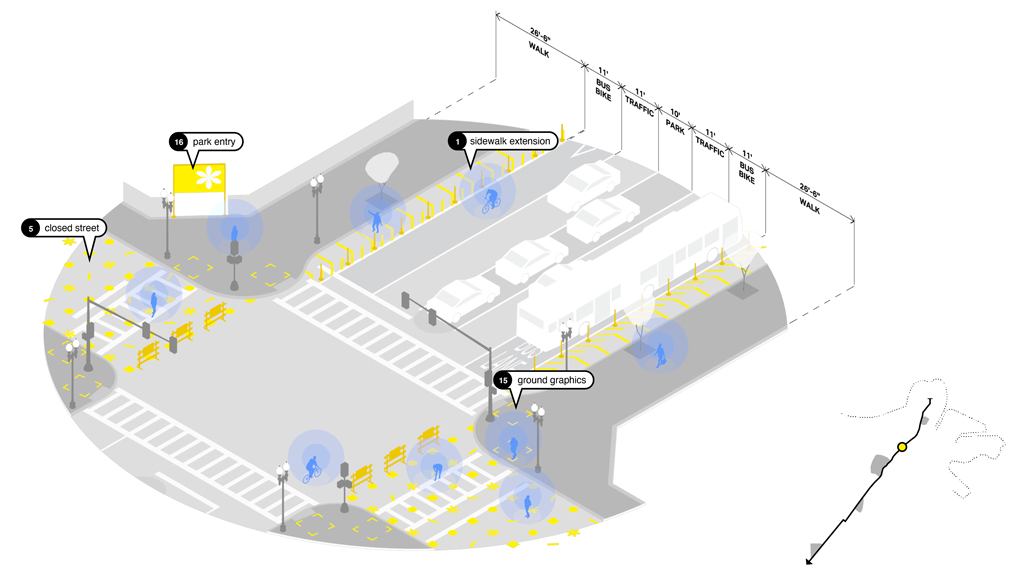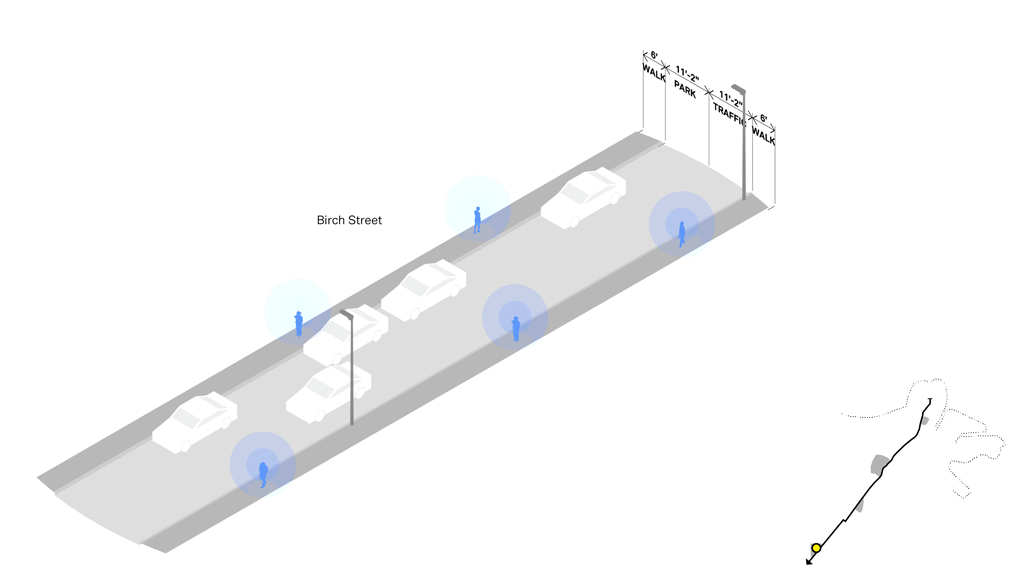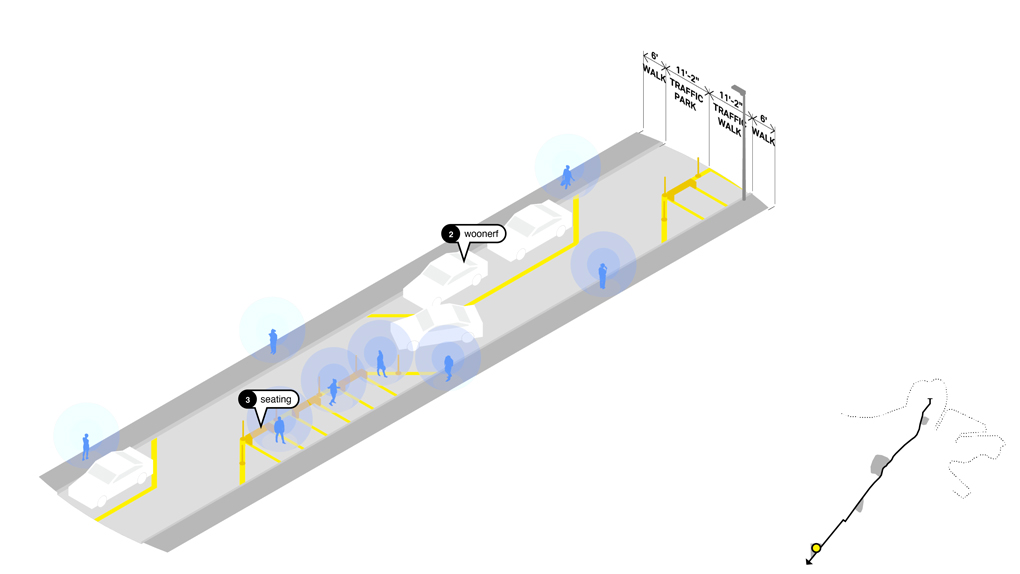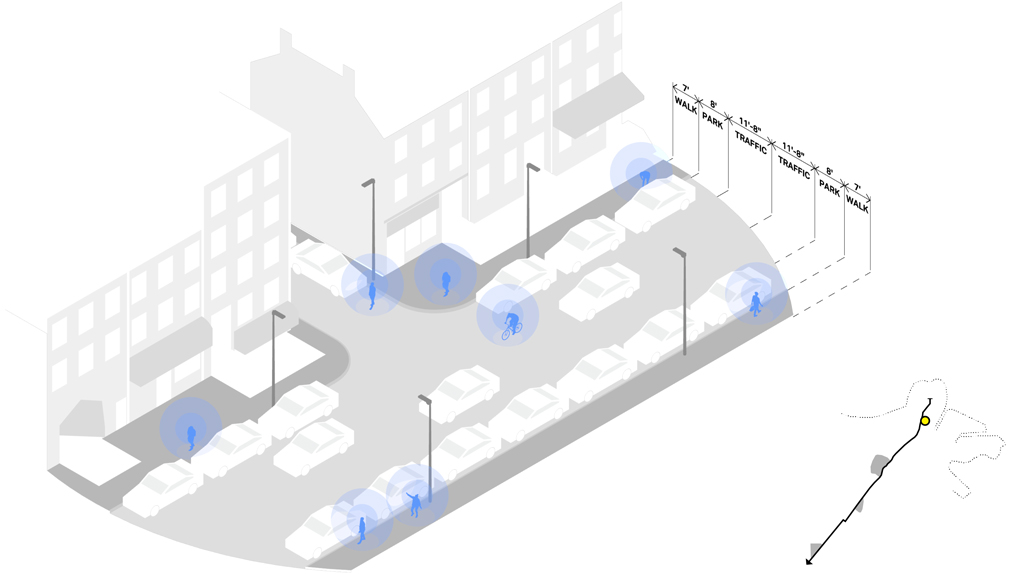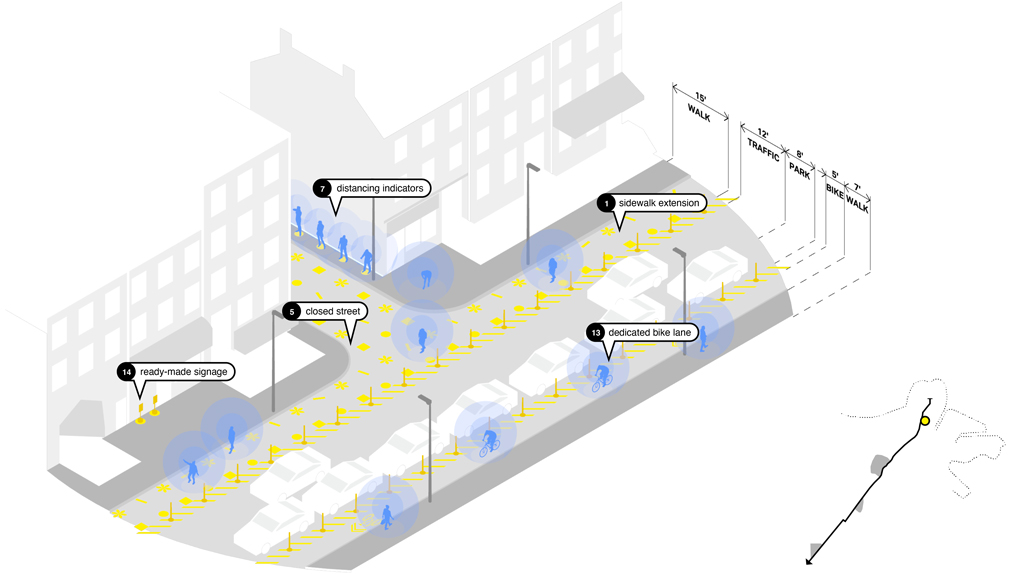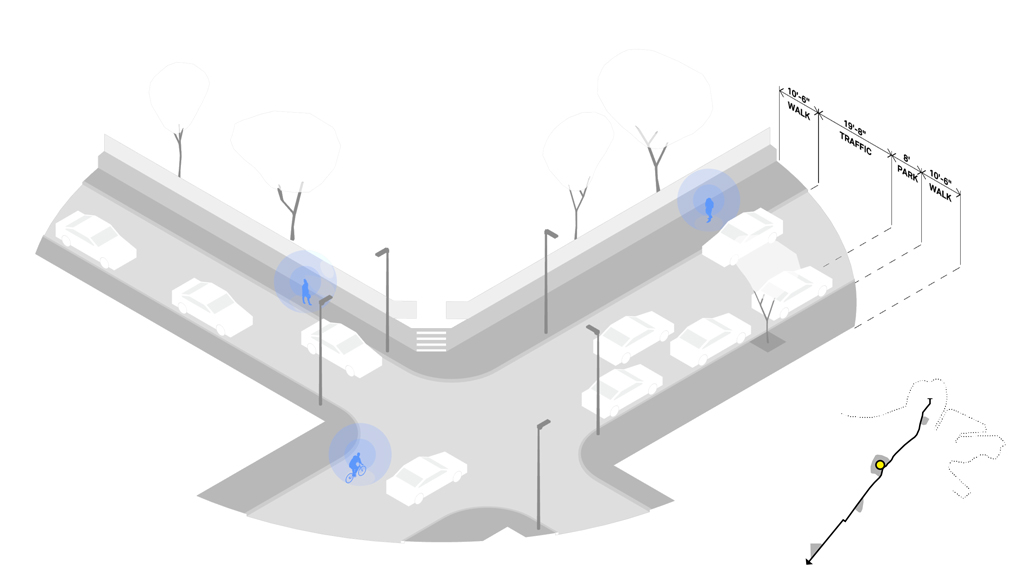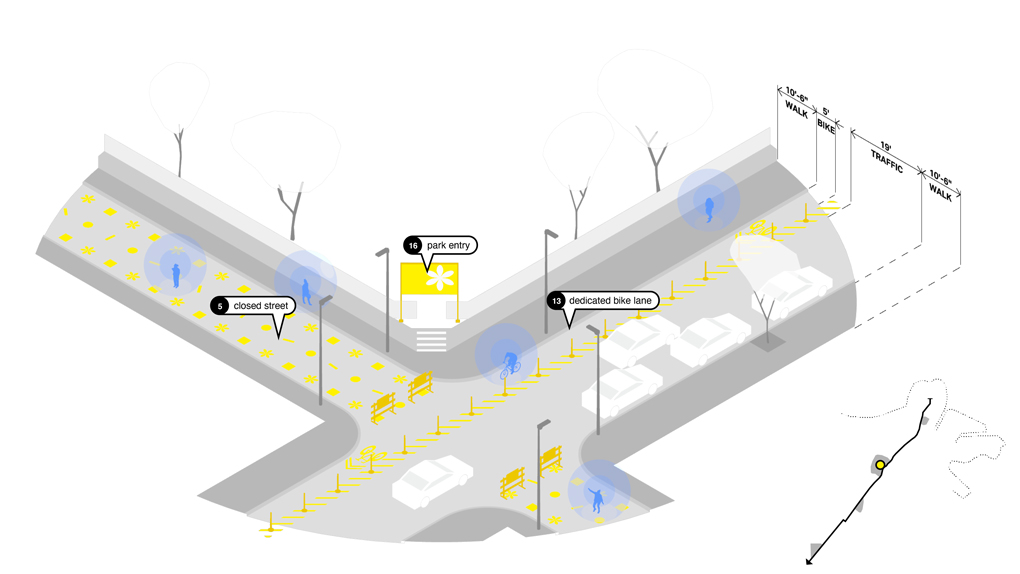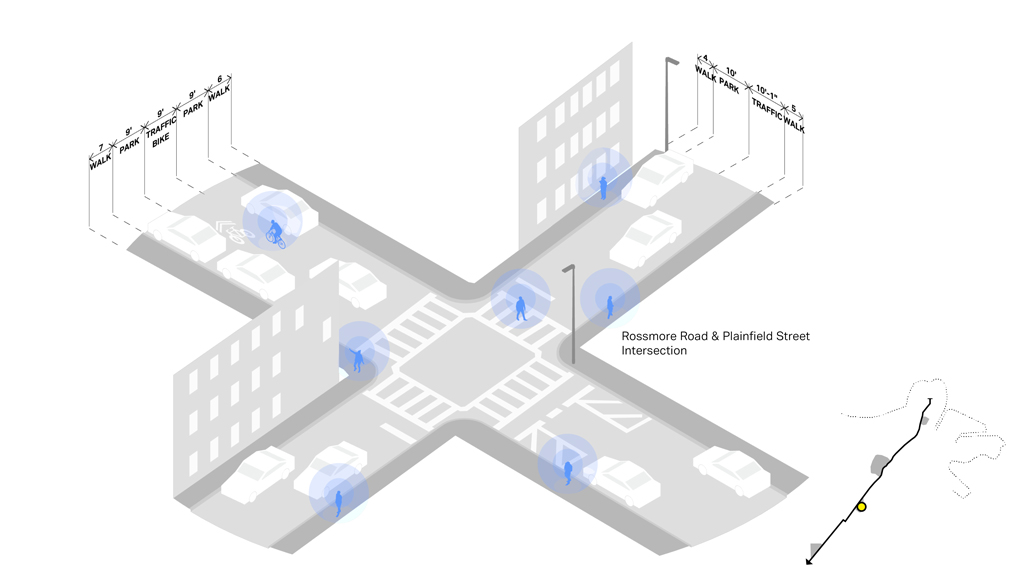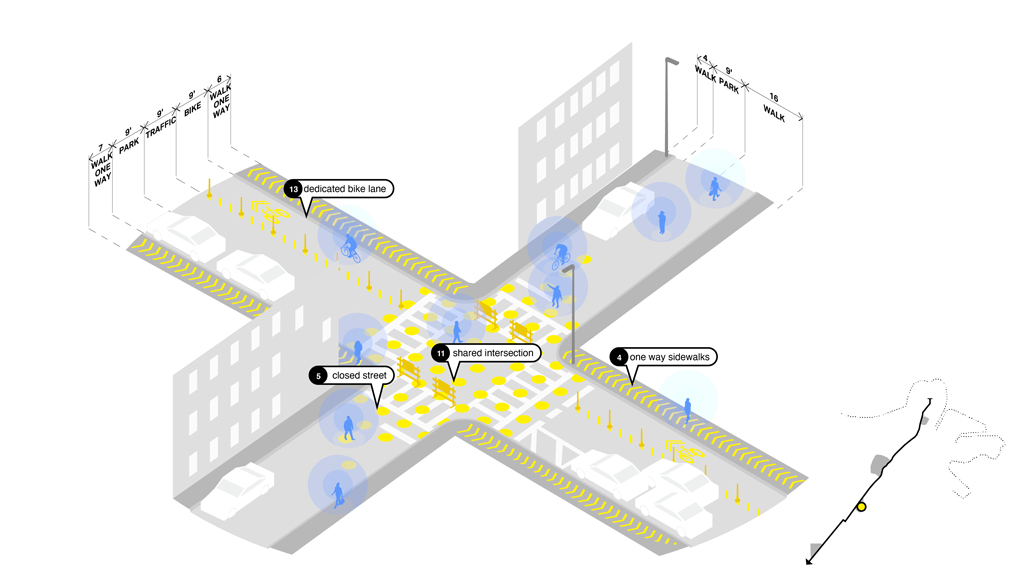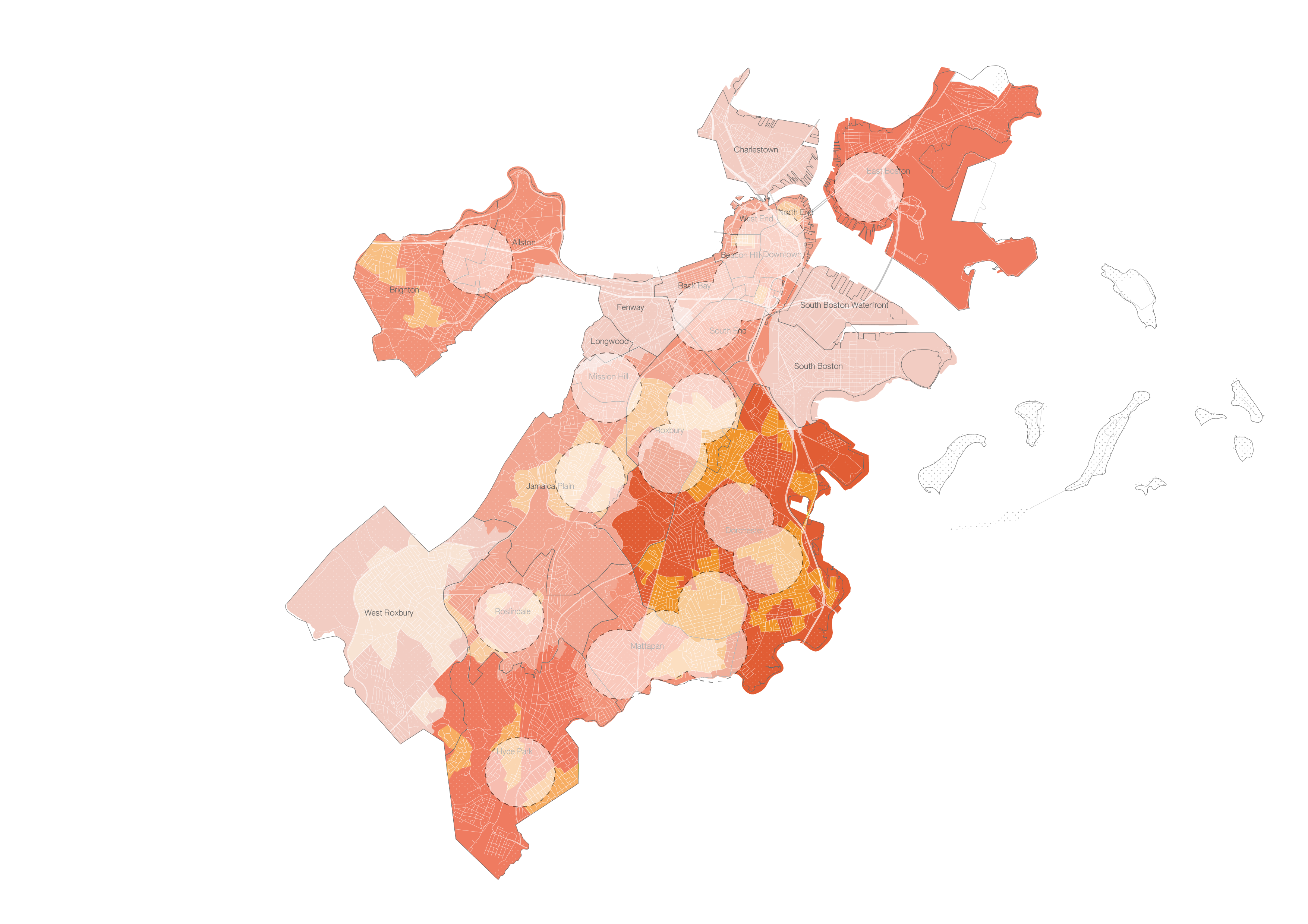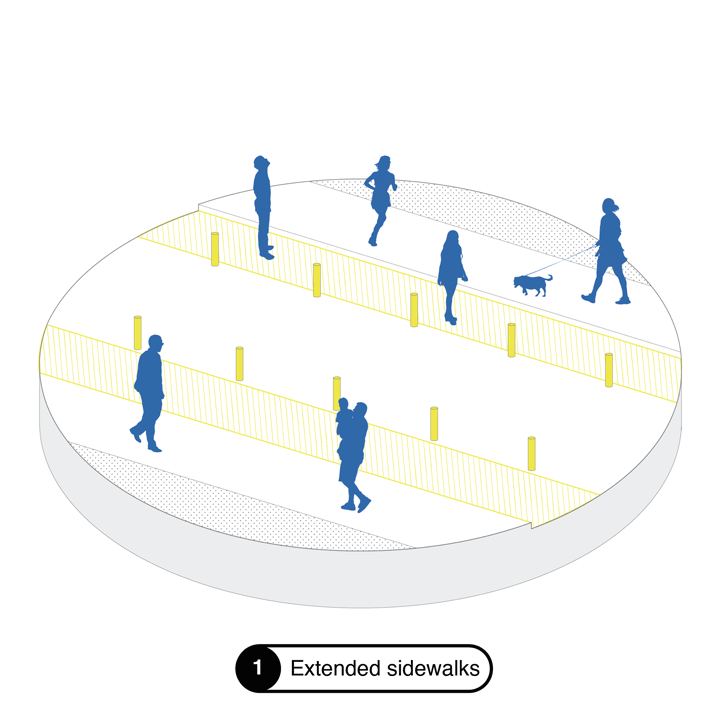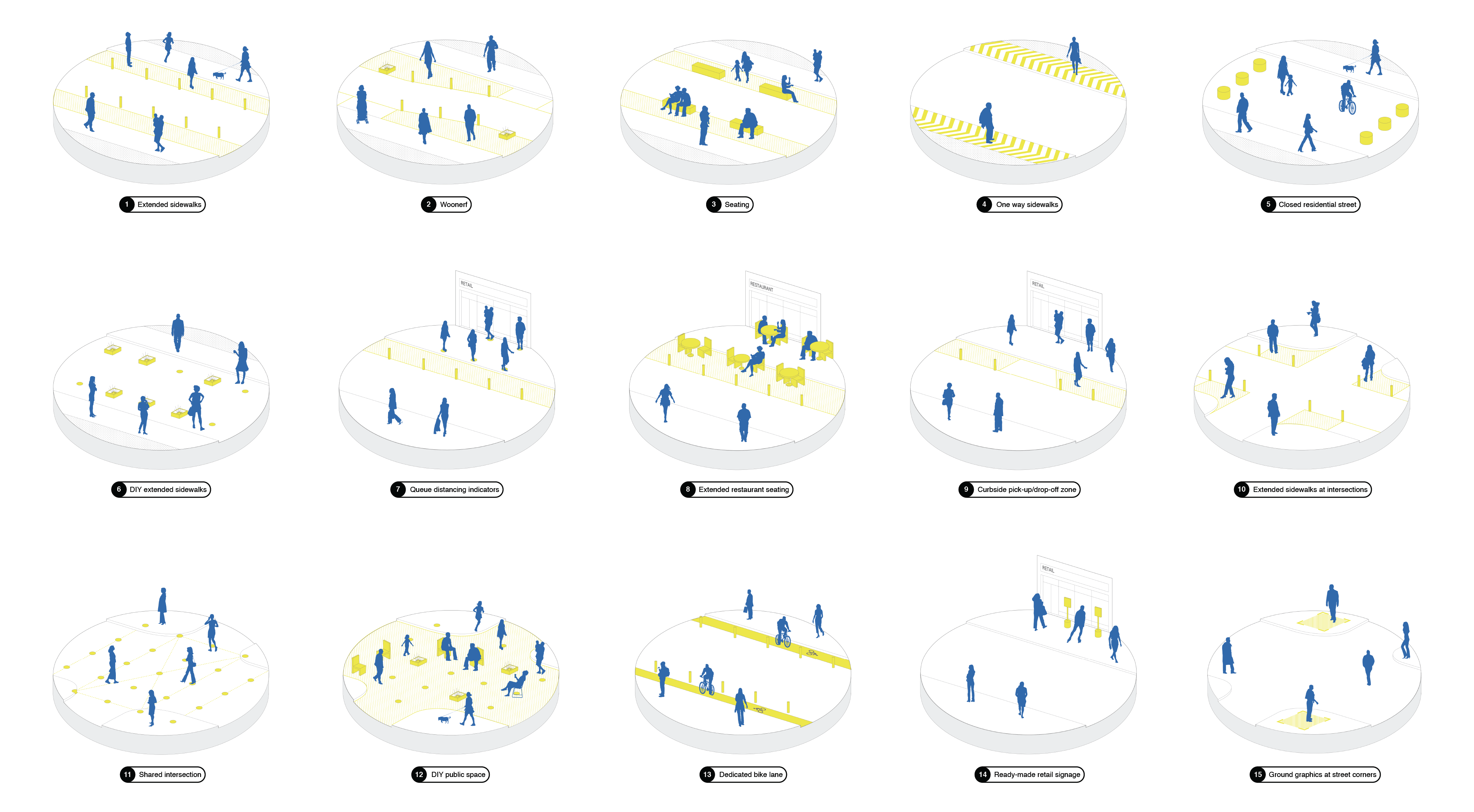
| Location | Boston, Massachusetts |
|---|---|
| Tags | Research |
With the outbreak of COVID-19, streets gained a new importance for urban residents who sought to safely move around the city. OverUnder investigated strategies for temporary street redesign that could address the middle stage between the emergency response shut down and the complete recovery from the pandemic.
The urban design goals set for the study were: pedestrian ease, improved public transportation access, design for increased bike traffic, reduced car traffic and safe use of public space. Mapping overlay of sidewalk widths, neighborhoods that were hardest hit by the pandemic, and locations of BIPOC-owned businesses helped us determine areas of need, to equitably distribute expanded pedestrian access in Boston. Using one of the City's major corridors, Washington Street, which passes through and connects a variety of neighborhoods, OverUnder imagined application of a number of tactical interventions.
